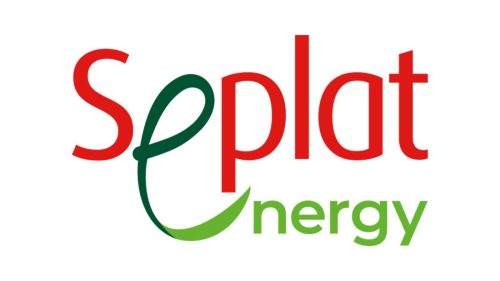Chemistry Keypoints: Non-metals and their compounds; Non-metals play a significant role in the world of chemistry and are essential in various industrial processes and everyday life. In this comprehensive article, we will explore different non-metals and their compounds, including hydrogen, halogens (with a focus on chlorine), oxygen and sulfur, nitrogen, and carbon.
Chemistry Keypoints: Non-metals and their compounds
We will examine their properties, reactions, laboratory and industrial preparations, uses, and specific tests.
Study other chemistry keypoints here
Hydrogen
Preparation: Hydrogen can be prepared in various ways, including laboratory preparation through the reaction of metals with acids, commercial production from water gas (a mixture of CO and H2), and the cracking of petroleum fractions.
Properties: Hydrogen is a colorless, odorless gas with various unique properties, such as being the lightest element and highly flammable.
Uses: Hydrogen is utilized in various industries, including the production of ammonia (NH3), as a reducing agent in metallurgy, and in fuel cells for clean energy production.
Test for Hydrogen: The “pop” test involves holding a lit splint near a source of hydrogen, resulting in a distinctive sound when hydrogen ignites.
Halogens: Focus on Chlorine
Laboratory Preparation: Chlorine can be prepared in the laboratory by the reaction of hydrochloric acid (HCl) with potassium permanganate (KMnO4).
Industrial Preparation: Chlorine is industrially produced by the electrolysis of brine (sodium chloride solution).
Properties: Chlorine is a greenish-yellow gas with a sharp, suffocating odor. It is highly reactive and a powerful oxidizing agent.
Study other chemistry keypoints here
Uses: Chlorine is employed in various applications, including water sterilization, bleaching processes, the manufacture of hydrochloric acid (HCl), plastics, and insecticides.
Hydrochloric Acid (HCl): Prepared by dissolving hydrogen chloride gas in water, HCl is a strong acid with various industrial applications.
Test for Chlorides: The addition of silver nitrate (AgNO3) to a solution containing chlorides results in the formation of a white precipitate, silver chloride (AgCl).
Oxygen and Sulphur
Oxygen
Laboratory Preparation: Oxygen can be obtained in the laboratory by heating potassium chlorate (KClO3) and collecting the evolved gas.
Properties: Oxygen is a colorless, odorless gas crucial for supporting combustion and respiration.
Uses: Oxygen is used in various applications, from medical oxygen to support respiration to industrial processes like steelmaking.
Oxides: Oxygen can form different types of oxides, including acidic, basic, amphoteric, and neutral oxides.
Trioxygen (Ozone): Ozone is an allotrope of oxygen and plays a vital role in the atmosphere by absorbing and filtering out harmful ultraviolet (UV) radiation.
Sulphur
Allotropes: Sulphur exists in various allotropes, including rhombic and monoclinic sulphur.
Preparation: While specific preparations of sulphur allotropes are not expected, sulphur(IV) oxide (SO2) is commonly produced by burning sulphur.
Properties and Uses of SO2: SO2 has several applications, including as a preservative in the food industry and in the manufacture of sulfuric acid (H2SO4).
Hydrogen Sulphide (H2S): H2S is a weak acid with reducing properties and is used in various chemical processes.
Test for Sulfides (S2−): The formation of a dark precipitate, such as lead sulphide (PbS), when a solution containing sulfides is treated with a metal ion solution is a common test for sulfides.
Nitrogen
Laboratory Preparation: Nitrogen can be prepared in the laboratory through the thermal decomposition of an ammonium salt.
Industrial Production: The Haber process is employed to industrially produce ammonia (NH3) from nitrogen and hydrogen.
Properties and Uses of NH3: Ammonia is utilized in the manufacture of fertilizers, household cleaning products, and refrigerants.
Trioxonitrate (V) Acid (HNO3): HNO3 is a strong acid with applications in various chemical processes.
Oxides of Nitrogen: Nitrogen forms various oxides, including nitrogen dioxide (NO2) and nitrous oxide (N2O).
Nitrogen Cycle: The nitrogen cycle is a crucial ecological process involving the conversion of nitrogen between different forms in the environment.
Carbon
Allotropes: Carbon has multiple allotropes, including diamond, graphite, and amorphous carbon.
Preparation: Carbon dioxide (CO2) can be prepared in the laboratory by the reaction of an acid with a carbonate.
Properties and Uses of CO2: CO2 is used in carbonated beverages, fire extinguishers, and as a cooling agent in refrigeration.
Carbon Monoxide (CO): CO is a toxic gas produced in various combustion processes.
Coal: Different types of coal are used as a source of energy and in industrial processes.
Coke: Coke is a byproduct of coal and is used in metallurgical processes and as a fuel.
Destructive Distillation: Wood and coal can be subjected to destructive distillation to produce various products, such as charcoal.
Synthetic Gas: Synthetic gas (syngas) is produced from coal and used as a fuel and chemical feedstock.
In conclusion, non-metals and their compounds play crucial roles in various chemical processes and industries. Understanding their properties, reactions, and applications is essential in chemistry and has practical implications in fields ranging from environmental science to industrial chemistry.







